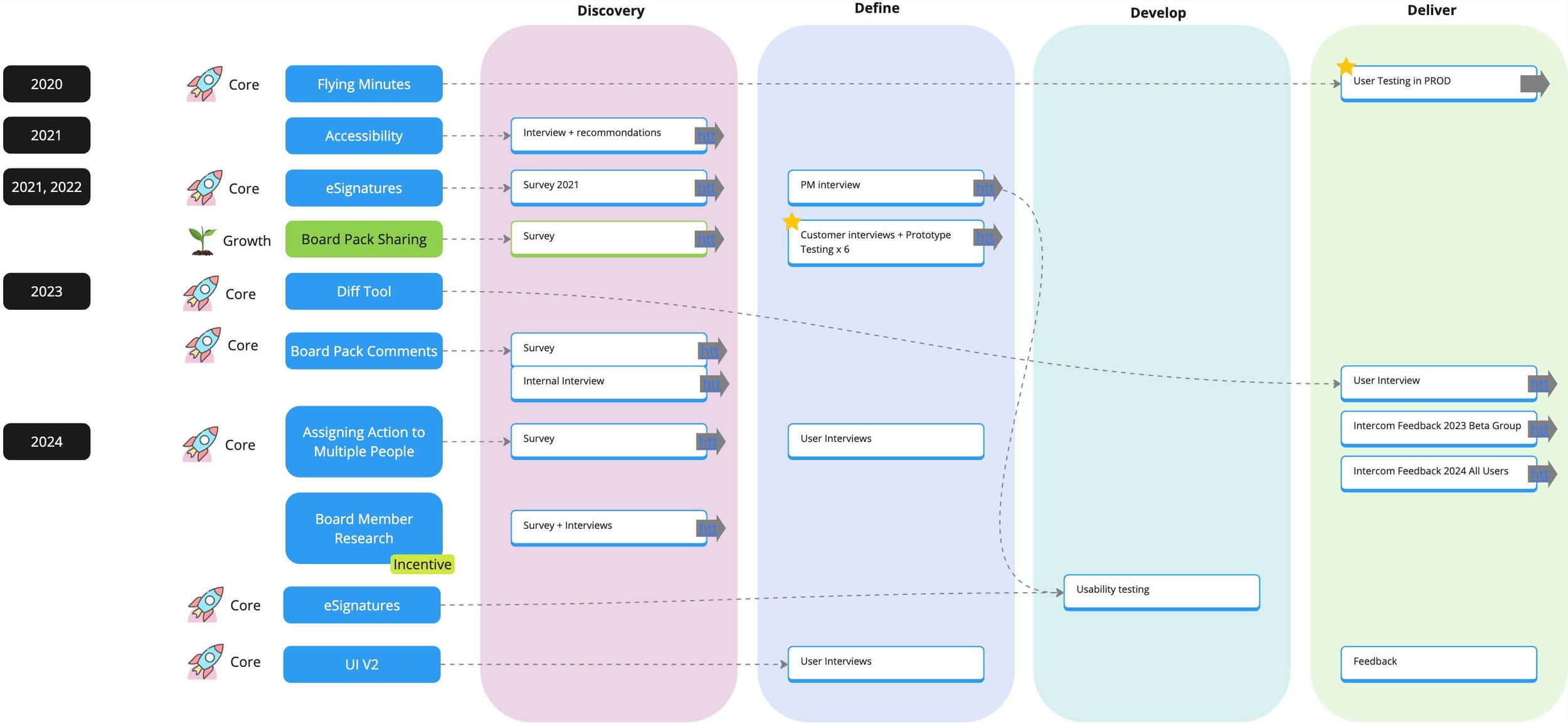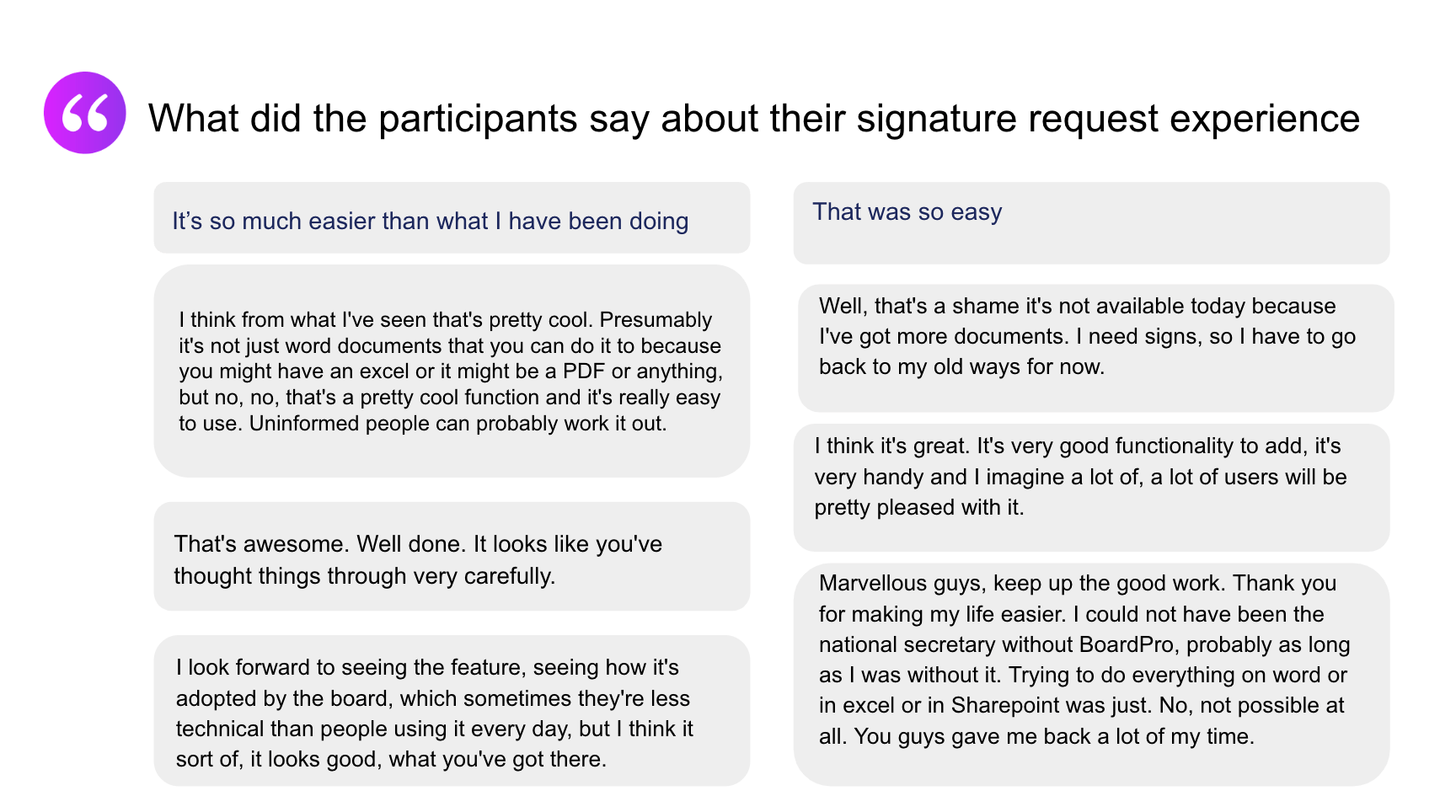
User Research
Methods Used
Survey
Interview
User testing
Data analysis
My Role
I led user research initiatives, managing the planning, recruitment, and facilitation of studies. I documented and analysed findings, translating them into actionable insights that shaped product development and design decisions. Collaborating with cross-functional teams, I ensured user feedback was seamlessly integrated throughout the product lifecycle, driving a user-centric approach to development.
Results
Through my user research efforts, I uncovered unexpected insights and identified critical user needs, enabling the team to address the root causes of user challenges. By validating hypotheses early, I streamlined the design and development process, saving time and resources. My research-driven approach led to tailored solutions that received positive user feedback and strengthened customer loyalty.
Usability Testing Example
eSignatures
I conducted this usability testing during the final development stage in a controlled testing environment to identify and address any remaining usability issues.
-
We want to test the usability and feature readiness before the initial release so that we can confidently release the function to all the customers.
Usability Testing Goal:
Evaluate the usability and effectiveness of the signature request function for administrators/board secretaries.
Evaluate the usability of the signing function for board members.
Feature Readiness Testing Goal:
Assess the utility of our signature request function to determine if the current features are sufficient for users despite the absence of certain functions.
-
Moderated Usability Testing
-
Participant Criteria
Roles: Administrators, Board Secretaries
Number of Participants: 9
Based in: New Zealand, Australia
Recruitment Process
Participants were sourced from an opt-in list gathered during the 2021 Digital Signing Survey. Invitations were extended to board secretaries and administrators in both New Zealand and Australia. However, all attendees for the usability testing sessions were based in New Zealand.
Testing Scope and User Profiles
What didn’t go well
Observations
What went well
Recommendations
Due date and automatic reminders: Most participants strongly desire these features, believing they would make their lives much easier. Some participants specifically mentioned wanting the same due date and reminder functions as in Flying Minutes.
Cancel Function for Sent Requests + Void Function for Fully Signed Documents: Instead of deleting them, about half of the participants thought it would be beneficial to always keep the record in BoardPro for better workflow management.
Selecting Signers: There is a need to improve the usability of the signer selection experience, particularly to help users remember which date field is for whom. This is especially important when the board secretary has to select the entire board for signing.
Outcome & Impacts
Usability Testing Outcomes
Identified two critical missing functions that were deemed essential by board secretaries and could have been deal-breakers if omitted.
Uncovered five usability issues that significantly impacted user satisfaction and task efficiency.
Impact of Changes
After implementing these findings:
The feature was released promptly and garnered positive feedback from customers via Intercom.
It achieved a 3% higher conversion rate compared to the previous feature release.
Planning a Project: From Discovery to Delivery with Research (Example only)
Defining the Problem & Hypothesis
User Research and Insights
UX Project Planning
Establishing UX Principles
























